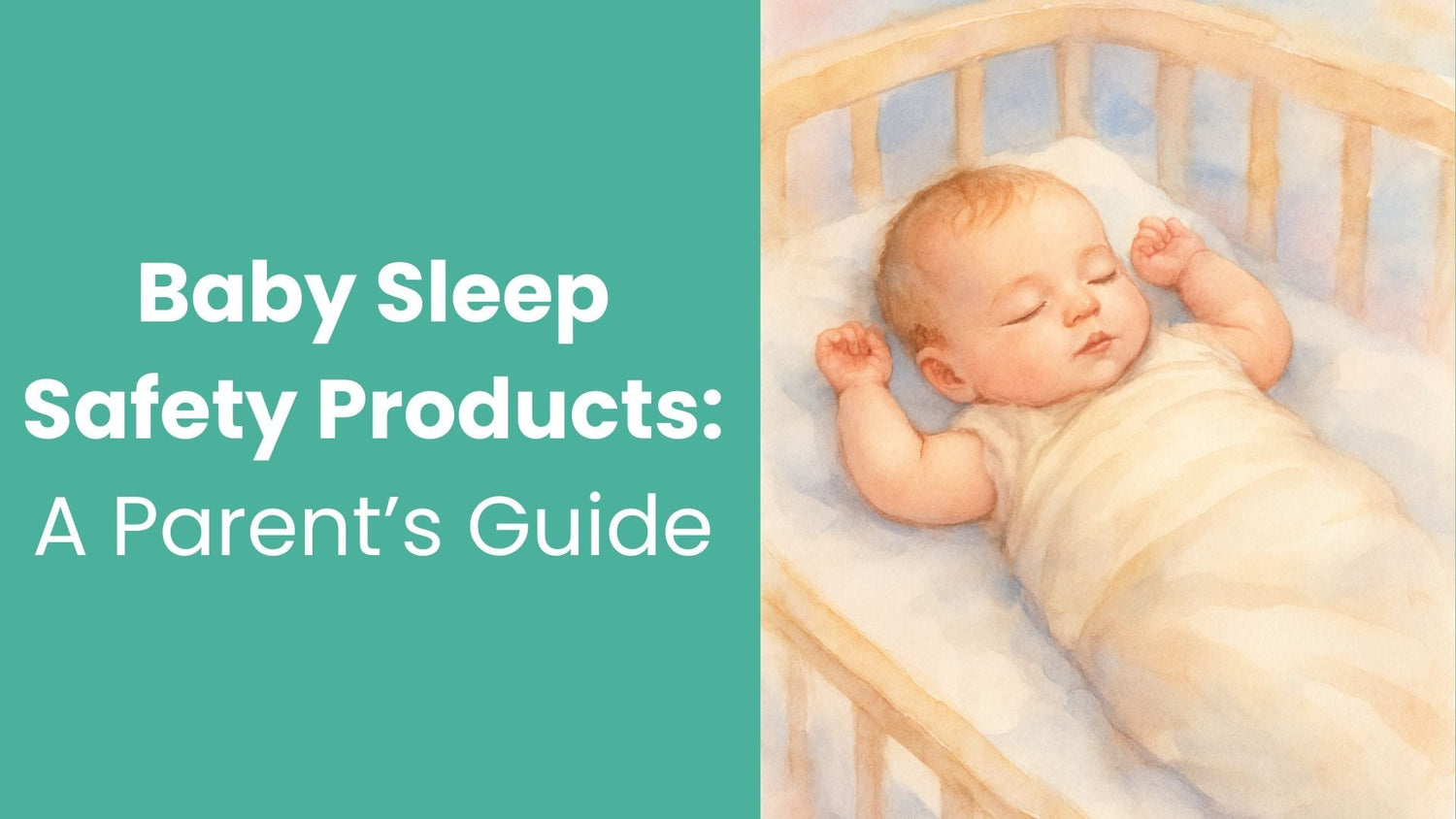Baby sleep safety products are the simple, proven tools that help you create a safer crib setup and daily routine. Below you will find what to use, what to skip, and how a non Wi Fi monitor like Babysense Prisma can support calm, consistent check-ins without adding clutter.
Baby sleep safety products are gear that reduce known risks in an infant’s sleep space. Core items include a firm crib mattress, fitted sheet, wearable blanket or sleep sack, a non Wi Fi video monitor, and simple room environment tools such as a thermometer and white noise.
Best baby sleep safety products
- Firm, flat crib mattress that fits snugly in a safety-certified crib
- Single fitted crib sheet that stays tight
- Wearable blanket or sleep sack once swaddling ends
- Non Wi Fi video monitor for private, always-on viewing
- Room thermometer and hygrometer to avoid overheating
- Continuous white noise machine with safe volume settings
- Optional pacifier for sleep if accepted
How to use each item safely
Crib and mattress
- Use a safety-certified crib and a firm, flat mattress that fits snugly with no gaps. See CPSC safe sleep guidance.
- Only one tight fitted sheet. Keep blankets, bumpers, and positioners out of the crib. The NIH Safe to Sleep program explains why this matters.
Wearable blanket or sleep sack
- Use a wearable blanket after swaddling ends or if your baby has started rolling.
- Choose a size that allows hip movement and a TOG that matches room conditions. Avoid overheating.
Non Wi Fi video monitor
- Pick a private, direct-connect monitor to reduce network exposure and keep setup simple.
- Place the camera at least 3 feet from the crib with cables fully secured and out of reach. Learn more in this monitor safety overview.
Room environment tools
- Use a basic thermometer and hygrometer to keep the space comfortable and avoid overheating.
- A constant white noise machine set near the door can help block household sounds. Keep volume low and device out of reach. See our guide to white noise for babies.
Monitoring with Babysense Prisma
Product spotlight: Babysense Prisma is a non Wi Fi, private connection monitor that can support safer sleep routines by giving you clear video without relying on a home network. The handheld parent unit is always on, so you can glance at sleep position, movement, and the crib environment during naps and nights.
- Why non Wi Fi can help: Fewer apps and logins may reduce alerts and setup steps, which can support consistent routines.
- Placement: Mount or place the camera so cables are fully secured and at least 3 feet from the crib. Avoid dangling cords. See AAP safe sleep basics.
- Use with intention: Check for needs, not every sound. Gentle, periodic check-ins may help reduce over-monitoring.
For shoppers comparing options, start with this overview of non Wi Fi baby monitors.
Monitor types at a glance
| Type | How it works | Pros | Considerations |
|---|---|---|---|
| Non Wi Fi video monitor | Direct, private connection to a parent handheld | Simple, always-on view, no home internet required | Limited remote access by design |
| Wi Fi video monitor | Streams to a phone app over your network | Remote viewing and cloud features | Setup and network security steps required |
| Audio-only monitor | Transmits sound only | Low cost, easy to use | No visual context for position or environment |
Common mistakes to avoid
- Adding pillows, blankets, crib bumpers, wedges, or sleep positioners. These are not recommended for infant sleep. See CPSC and NIH Safe to Sleep.
- Overheating with heavy layers. Dress baby lightly and use a wearable blanket matched to room conditions.
- Loose or frayed cords near the crib. Secure cables and keep devices out of reach.
- Using a car seat, swing, or lounger for routine sleep. Follow manufacturer guidance and move baby to a flat, firm surface when possible.
Want a calm rhythm to pair with your gear? Try our baby sleep schedule guide to build a simple day-night flow.
FAQs
What should be in my baby’s crib?
A firm mattress with a tight fitted sheet and your baby placed on their back. No pillows, blankets, bumpers, or toys. This setup aligns with AAP and NIH Safe to Sleep basics.
Are sleep positioners or wedges safe?
No. Positioners and wedges are not recommended for infant sleep and may increase risk. See the CPSC for safety updates.
Do I need a baby monitor?
Not every family needs one. Many parents find a non Wi Fi video monitor helpful for quick, quiet check-ins without opening the door. Compare options here: non Wi Fi baby monitor guide.
How loud should a white noise machine be?
Keep volume low and place the device away from the crib. Continuous sound can help mask household noise without being stimulating. See our guide to sound machines.
When do I switch from swaddle to a sleep sack?
Transition when your baby shows signs of rolling or per your pediatrician’s guidance. A wearable blanket keeps the crib free of loose bedding.
Wrap up
Safe sleep is mostly about keeping the crib simple and consistent. Choose a firm mattress, a tight sheet, a wearable blanket, and a private, non Wi Fi monitor like Babysense Prisma to support calm check-ins. Layer in a thermometer and gentle white noise as needed, and review trusted safety guidance regularly.
Explore non Wi Fi monitor tips
Last updated: September 8, 2025 • Educational only and not medical advice. For personal guidance, speak with your pediatrician.




